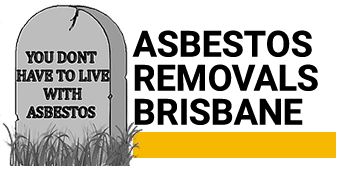

What are the Different Types of Asbestos?
Asbestos-containing materials is, unfortunately, a very common occurrence in Australian households, as it’s insulative properties and resilience made it a favourable product for a number of building applications. But considering asbestos is such a wide term, many people aren’t aware there are different types of asbestos ranging in colour, commercial use and levels of danger. Though there are six types of asbestos, only three are commonly used worldwide. These types of asbestos can be grouped into two categories – Serpentine and Amphibole – which feature curly fibres vs straight fibres. As the latter has an easier time attaching to the lungs, it’s considered more dangerous than the Serpentine kind (though every kind of asbestos is dangerous). In today’s blog, we take a look at the 3 main types of asbestos used in Australia and where you can expect to find them hiding.
3 Main Types of Asbestos
Serpentine
Chrysotile Asbestos (white asbestos)
Of the 3 main types of asbestos, chrysotile asbestos is the most common type of asbestos used in building materials and the only form of asbestos to fall under the serpentine mineral category. This subgroup is comprised of minerals commonly found in serpentinite rocks and can be divided into three primary serpentine minerals – antigorite, chrysotile and lizardite. Though Chrysotile asbestos was primarily used in corrugated sheeting, it’s been found in thousands of products, ranging from vinyl tiles and brake pads to roof shingles and insulation.
Amphibole
Amosite Asbestos (brown asbestos)
Amosite asbestos was the second most used asbestos nationwide and is characterised by its brownish-grey colour. As its extremely heat resistant and strong, amosite asbestos was commonly used as an insulative material, seeing its way into cement sheets and insulation. Due to its structure, amosite asbestos is one of the most dangerous types of asbestos as the straight fibres easily attach to the inside of the lungs.
Crocidolite asbestos (blue asbestos)
Crocidolite asbestos is the most dangerous form of asbestos as its brittle nature and tiny, straight fibres make it far easier to inhale. Though not as widely used as ámosite and chrysotile, crocidolite asbestos is so hazardous it devastated an entire town in Western Australia – also known as the Wittenoom tragedy. As a former asbestos mining town, Wittenoom was officially delisted and removed from all road signs as it proved too dangerous to visit. So dangerous was the blue asbestos mined that it continued to kill residents’ decades after the mine was shut – killing up to 2000 people in total.
Three less common types of Asbestos:
Tremolite, Actinolite and Anthophyllite
These types of asbestos were never mined or intended for use but can be found in minerals by accidental contamination, with the primary suspect being talc.
How can I tell if asbestos is present?
Asbestos cannot be seen by the human eye, as it contains microscopic fibres. The only way to find out if your home has asbestos-containing materials is to get it professionally tested. An asbestos removal specialist can look at the most common areas asbestos is found and conduct tests to see if the material is present. They can then decide if the asbestos should be removed or encapsulated. If you’re unsure about whether a material you’ve found contains asbestos, or your home was built before 2003, it’s worth getting a specialist to conduct an inspection.
Does your home need asbestos testing?
Suspect your home may contain asbestos? Don’t delay, as even a one-time exposure can lead to irreversible damage to your health. You can request a free quote online or call us on 0412 314 588 to arrange an inspection today.
